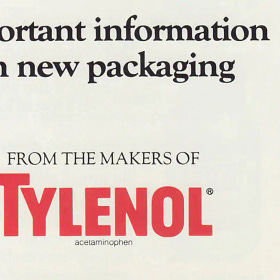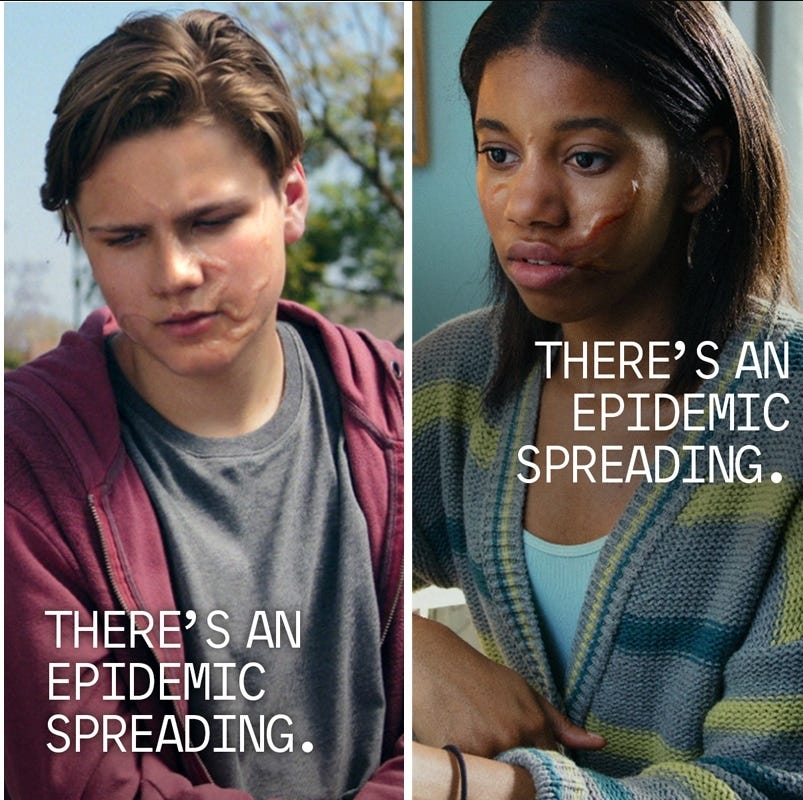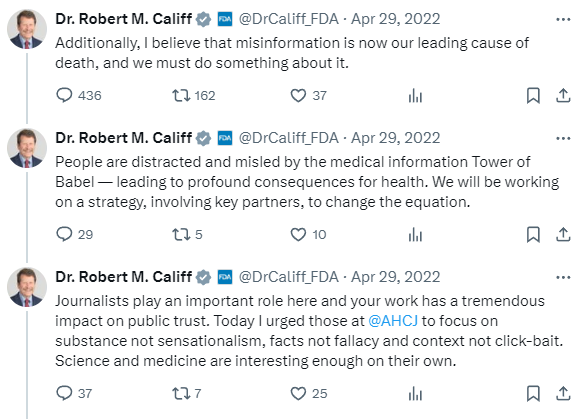“We cannot expect people to have respect for law and order until we teach respect to those we have entrusted to enforce those laws.” - Hunter S. Thompson
On Thursday, April 11th, the House Oversight Committee held a hearing to examine the U.S. Food and Drug Administration's activities. Who was the distinguished guest to be thrilled and grilled by the panel? None other than FDA Commissioner Dr. Robert Califf.
The four-and-a-half hours of question-and-response format offered a glimpse into the administration's successes and shortcomings alike and provided a genuine opportunity to understand the efforts being made to better serve the American people. Illustrating the expansive responsibilities of the FDA, topics ranged from the prices and accessibility of drugs to supply chains, product labeling, contaminants in cinnamon applesauce, and even imported seafood. Unfortunately, the meeting was also chock full of premeditated points, parroted to promote polarizing party positions, turning the potential for constructive discussion into unproductive theatre.
Tucked into the mess was dialogue covering the regulation of tobacco and nicotine and the conduct of the FDA’s Center for Tobacco Products. Valid points were glossed over, while others missed the mark entirely, and in similarly disappointing fashion, despite largely knowing the list of questions that would be asked ahead of time, many of the responses supplied by FDA Commissioner Dr. Robert Califf fell short and gave listeners serious reason for concern. Not only were certain of his statements poorly substantiated, but they were also incongruent with the mandates set forth for the FDA. Select excerpts demonstrate the administration’s continued, indefensible efforts to mislead the American public.
Let’s explore.
Concerning the FDA’s Center for Tobacco Products, the spotlight shone brightly on the illegal vaping epidemic.
Representative Rashida Tlaib:
Do you believe our country is experiencing a vaping epidemic?
Commissioner Dr. Robert Califf:
To the extent epidemic is defined as millions of people, yes.
Unsurprisingly, other comments aimed to synthesize panic by suggesting the growing use of vapes was due to underage usage:
Representative Pat Fallon:
I'm here today, commissioner, not so much as a member of Congress, but as a parent. I just wanted to visit with you on a few things particularly. You know, I have two teenage boys, 17 and 14, and I see the teenage vaping skyrocketing, and I think that's an entry to some really nefarious habits moving forward.
These remarks undoubtedly succeeded in stirring up fear in many. What’s so odd is that Dr. Califf’s opening statement acknowledged the opposite: the recent decrease in underage usage of tobacco and nicotine vaping products. Yet he made little effort to directly correct suggestions such as Representative Fallon’s. For the sake of consistency and accuracy, one would expect the FDA to more fully articulate the decline rate of underage vaping usage as well as avoid using loaded terminology—FDA CTP Director Brian King acknowledged these very points in 2022 when asked about the administration using the term epidemic:
I will say that I’m an epidemiologist by training, so I’m fully cognizant of the definition of an epidemic which is unprecedented increases over what you’d expect at Baseline. That said, I think and know that the science has shown a decline in the number of youth users and that's a good thing over the past couple years. We have seen declines since the peak in 2019.
Toxic State
While there is no underage vaping epidemic, it is assuredly true that the domestic market is still facing a litany of problems. The opening remarks of James Comer, Chairman of the House Oversight Committee, slammed the FDA on the specifics:
Through our investigation of tobacco products regulations, we learned the FDA is failing to consistently and effectively regulate tobacco products. According to the Reagan-Udall Foundation, the FDA has been reactive and overwhelmed in its tobacco products regulation. The FDA has delayed review of applications for products that can reduce harm for many Americans. Further, the FDA's failure to regulate has allowed unsafe and illicit products to proliferate. In fact, the United States Court of Appeals for the Fifth Circuit slammed the FDA for sending manufacturers of flavored e-cigarette products on a wild goose chase. Meanwhile, the FDA is also failing to prevent illicit flavored tobacco products from China and entering the country and harming Americans. The FDA is not implementing enforcement actions to address illicit flavored tobacco products in stores across the country.
Comer’s mention of the Reagan-Udall Foundation refers to the same report highlighted more than a year ago in this very publication:
Changing Gears: A Shift in U.S. Tobacco Regulation
Representative Pat Fallon Further emphasized the dynamics currently plaguing the market:
We're not speaking about hypotheticals or back-ally deals. This is flagrant non-compliance. And this was just randomly discovered by the inaction of the FDA. What we've essentially seen is almost a prohibition on legal products, with unregulated and illegal products rushing in to meet the demand, then, by further weak action on enforcement, US stores have seemingly no concerns about openly selling the products all over the place.
Pressing Dr. Califf on how this is now being addressed, Representative Fallon asked:
How many seizures have we had at retail shops across the country?
Commissioner Dr. Robert Califf:
We've only had a few seizures. We've had 32,100 Civil Money Penalties, and those are ramping up considerably as we go. As I think you know, seizures require a whole different order of magnitude of legal work.
Representative Fallon:
So what how do we … these are all over the place … so what do you think that the FDA can do to, you know, mitigate this?
Commissioner Dr. Robert Califf:
Well, given the fact that there's a vape shop in almost every neighborhood, it would take a lot more people to do what you're saying of clearing the shelves. So, we have an action plan. It's going to get better and better. As I've already said, if user fees were paid by the vaping industry, that would be about $100 million. We could hire a lot of people and spend a lot more time out there in the shops
Civil Money Penalties are ineffective when the maximum penalty is far exceeded by the potential profits of selling illicit volumes. For operators, such fees simply become a cost of doing business. As for Dr. Califf blaming absent vaping user fees for the lack of more substantial enforcement, it should be noted that user fees are based on market share. Are we to believe that the Chinese manufacturers and associated importers, who have historically registered imported shipments as batteries and flashlights to avoid detection and taxation, would concede to paying user fees if such an effect was enacted? Surely not.
One of the most illuminating exchanges came from Representative Virginia Foxx, inquiring about the FDA’s current actions to amend past shortcomings:
Had the CTP done its job over the last decade, there should have been tobacco harm reduction products approved through the appropriate process. There's clearly a demand for these products that's being filled by illicit flavored disposable e-cigarettes now make up more than 70% of the e-cigarettes or ENDS Market as my colleague is talking about, most of which are from China. What is the FDA doing to rectify this problem of illicit products in the market?
Commissioner Dr. Robert Califf:
If I may, ‘tobacco harm reduction’ product is an industry term. I'd say we're all in favor of reducing harm from tobacco. And, as I went over with an earlier question, we have an increasing number of warning letters, civil money penalties, and injunctions now, and seizures now at ports of places of import. It is a very large number of products. There's no question about it. It is a big job and we have a lot more work to do.
The claim that ‘tobacco harm reduction’ is an industry term shows a clear disdain for the concept and a desire to distance the administration from it. Representative James Comer was sure to revisit by questioning such a remark:
Commissioner, in this hearing, you have said that the term ‘harm reduction’ is an industry term or a term that industry uses. But to be clear, The Institute of Medicine used this term in the title of its report titled Clearing the Smoke: Assessing the Science Base for Tobacco Harm Reduction. So it's not just industry that uses this term. The Institute of Medicine uses it, and the concept of ‘harm reduction’ has been embraced in other countries. That is, they accept and communicate that there are options that are less risky than a traditional cigarette. Are we ever going to get to that point in this country? Do you accept this idea?
Commissioner Dr. Robert Califf:
Definitely accept the idea. Your point is well taken that industry is not the only entity to use it. But what I want to avoid, speaking of harm reduction, we've talked about combustible tobacco kills people. Neither using vaping or combustible tobacco is the healthiest thing you can do. Vaping compared to none of the above has residues that are quite concerning for long-term use. So if you're a combustable tobacco user, if you switch to vaping, that's less harm. That's good—as long as a product is not packaged in a way that's encouraging youth to get addicted to nicotine. One of the main harms I want to get away from is millions of youth being addicted to nicotine by vaping products. So we got to find that middle ground, and I accept there's a point here. I'm just worried that when we use the term harm reduction now, it's often part of a vast advertising campaign that's not taking account of the addiction side in youth.
Representative James Comer:
But you admit that vaping is less harmful than than cigarettes? I mean we we've...
Commissioner Dr. Robert Califf:
Right. Admitting it sounds like I'm confessing of something. No. I agree. I agree.
Califf should really listen to his own words. It sounds like he’s confessing something because he is confessing something. He is backpedaling from the announced 2017 comprehensive regulatory plan, which states:
To make certain that the FDA is striking an appropriate balance between regulation and encouraging development of innovative tobacco products that may be less dangerous than cigarettes, the agency is also providing targeted relief on some timelines described in the May 2016 final rule that extended the FDA’s authority to additional tobacco products. The agency will also seek input on critical public health issues such as the role of flavors in tobacco products.
Pressing further on this point was the questioning of Representative Russell Fry:
Does CTP still believe in the Continuum of risk of nicotine products and does the FDA think it's helpful for adult smokers who would otherwise continue smoking cigarettes to switch from combustible cigarettes to smoke-free Alternatives? yes or no.
Commissioner Dr. Robert Califf:
There's not a yes or no answer to that because for adults the best thing to do is to stop using tobacco products altogether. The second best would be to switch to a vape. But the very best would be to be, as we already discussed, if you look at the residue from vaping relative to no use of any tobacco product, it's, you know, raises a number of issues over the long[term].
The most perplexing aspect of this stance is that during other parts of his testimony, Dr. Califf seemed rather enthusiastic about other forms of harm reduction:
Representative Nancy Mace:
If the DEA concurs with the FDA's recommendation, can you help me understand that the FDA will take any take on additional responsibilities or if your role will change as it relates to cannabis?
Commissioner Dr. Robert Califf:
This is a very complicated topic, but I’ll just say that cannabis, you know, remember, there are over 30 different forms of cannabis now, different chemicals, that are made and it falls in this area where State regulation has been dominant. This is an area where I believe we would be better off if we had guidance from Congress about how to proceed because we're not — medical marijuana is one thing where there's a medical purpose, and it's proven through traditional medical Pathways — but when it's used for recreational purposes, there is no medical benefit in that case. So it doesn't fall under our typical regulation, but what's in play with this and several other things that I think we'll probably talk with the chairman about here shortly like CBD the question is how do we reduce harm that's done when it's used inappropriately or at a dose which is dangerous or when it's packaged in a way to market it specifically to children. We're seeing some of this stuff packaged and gummy bearers that easily mistaken for children's candy. But we're going to need help in a regulatory pathway, remembering that almost everything we do is there's a health benefit, like you create a new drug or a new device or a food for a health benefit. This is an area of harm reduction when it's used recreationally.
Of course, if you’ve been following the FDA’s words and actions concerning nicotine over the last few years, none of the above inconsistencies are all that surprising. But other questioning by Representative Virginia Foxx led to perhaps the most damning comment from the entire hearing (emphasis added):
Representative Virginia Foxx:
Commissioner, you've recognized the critical need for the public to have access to accurate medical and scientific information to help inform the decisions they make about their health. How does the FDA justify the decision to spend millions on ad campaigns and scare tactics such as ‘brainworms’ or ‘metal dragons’ that are not based on verifiable facts, and when will the FDA focus on the facts about what can make cigarettes deadly as Congress intended in the Tobacco Control Act instead of relying on misunderstandings and outdated narratives?
Commissioner Dr. Robert Califf:
I'm not sure I follow that question. I would just say we've seen dramatic progress in reduction in combustible pack tobacco use, significant reduction in the number of people dying although it's still 460,000. I'll just note that in my time at Alphabet I learned a lot about advertising. I think our statements are based in fact and they in include a component to reach into the culture of people that need to receive the information. Simply stating a fact when you're talking to a teenager is not necessarily the best way to reach that teenager. You need to have the mind prepared to absorb the information.
Representative Virginia Foxx:
So ‘brainworms’ and ‘metal dragons’, um…?
Commissioner Dr. Robert Califf:
I don't know about ‘brainworms’ and ‘metal dragons’, but I'll take your word that something alluding to that must exist somewhere.
The ads do, in fact, exist. Ironically, the commercial that includes the metal dragon states “Nothing is as scary as the facts.” And if you are curious about what in the world brainworms are about…well, here you go:
In support of Commissioner Dr. Robert Califf and the administration, Representative Jamie Raskin, Ranking Member of the House Oversight Committee, stated:
It's crucial that FDA continue to carry out its mission and create meaningful regulations based on sound science and not conspiracy theories or ideological programs. Public attacks on FDA without any corresponding legislative solution simply undermine its ability to effectively protect public health.
I could not agree more. It also aligns with what Dr. Califf said not all that long ago:
With that in mind, let’s revisit part of Califf’s response to Rep Foxx, verbatim:
Simply stating a fact when you're talking to a teenager is not necessarily the best way to reach that teenager.
Americans — all Americans — deserve honest, direct communication. The FDA’s ideological war on nicotine risks eroding public confidence in all of the administration’s critically important roles. There is no better way to lose the trust of entire generations than by continually, intentionally misleading them.
If you enjoyed this piece, hit “♡ like” on the site and give it a share. To further show your support, consider pledging a paid subscription to Invariant.
Questions or thoughts to add? Comment on the site or message me on Twitter.
Ownership Disclaimer
I own positions in tobacco companies such as Altria, Philip Morris International, British American Tobacco, Scandinavian Tobacco Group, and Imperial Brands. I also own positions in Haypp Group, a major online retailer of reduced-risk nicotine products.
Disclaimer
This publication’s content is for entertainment and educational purposes only. I am not a licensed investment professional. Nothing produced under the Invariant brand should be thought of as investment advice. Do your own research. All content is subject to interpretation.








So, if I'm understanding this correctly, they're more focused on the semantics of the term "harm reduction" than effectively dealing with the endless number of vape shops popping up all over the country that have an economic incentive to sell illegal products? If so, this is crazy.
I too watched most of the hearing. I found most of Califf's answers, especially regarding tobacco to be unsatisfactory and mealy-mouthed. No hint of any advanced thought process or cost-benefit analysis when it comes to the public at large. No remorse over the fact that law-abiding businesses have effectively been crowded out by foreign businesses unconcerned with complying with this country's rules and regulations., which in the end is less safe than it otherwise could be.